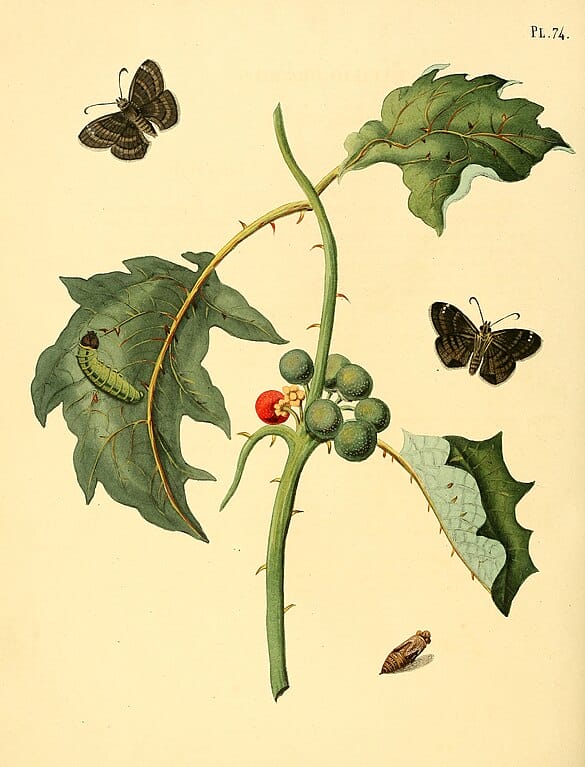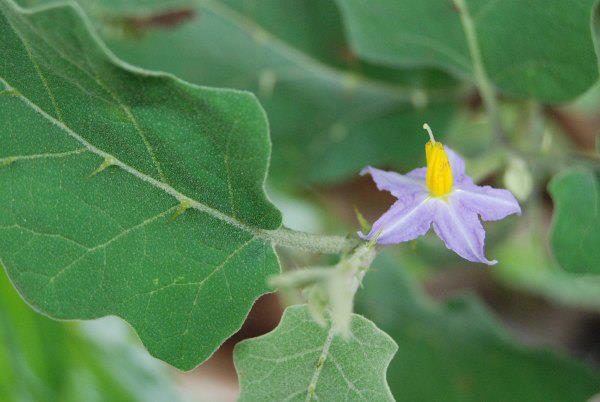Solanum indicum, BruhatiIndian Nightshade, Poison BerryBruhati (Ayurveda) Tian Qie Zi (TCM) |

|
 Solanum indicum
Solanum indicumPapillons de Surinam dessinés d’après nature”, plate 74, circa 1850
 Solanum indicum
Solanum indicum(Photo by Muthukurussi) (Wikimedia)
Botanical name:
Solanum indicum (syn. S. anguivi)
Parts used:
Root or Whole Plant; sometimes the Fruit
Temperature & Taste:
Cold, dry. Bitter
Classification:
Uses:
1. Clears Phlegm and Heat, Stops Cough::
–Nasal congestion (TCM, Ayurveda)
–acute Cough, Bronchitis, Asthma
–root or fruit can be used for this indication
2. Clears Wind and Heat:
–Itching, Obstinate skin diseases including Leprosy (Fruit, Ayurveda)
–Toothache and Headache (Root: Ayurveda, TCM)
–also for Heart disease related to Wind
3. Clears Heat, Promotes Urine:
–Edema
–Strangury
4. Promotes Digestion:
–used as a bitter tonic to promote appetite and digestion
–also for loss of Taste
5. Used for Diabetes:
–fruit is used for Diabetes and Hypoglycemia in Thailand
Dose:
Powder (of the whole plant): 3–6 grams (API)
Decoction (1 in 16, boiled with 1 in 4): 40–80mls (API)
Substitute:
1. According to the Chinese Pharmacopoeia, the root of Solanum surattense, S. torvum or S. xanthocarpum can replace the root of Solanum indicum.
2. In Thai medicine, Solanum trilobatum is used synonymously with S. indicum.
Main Combinations:
1. Bronchitis with Fever, Solanum indicum with Solanum xanthocarpum (Kantakari), Sida cordifolia, Adhatoda and Raisins, equal parts prepared as a decoction.
2. Vata/Wind Edema, Solanum indicum, Ginger, Boerhaavia
3. To enlarge the Breasts and Penis, an oil is prepared from Solanum indicum, Asparagus Shatavari, Withania, Costus and Indian Spikenard by boiling in milk and Sesame oil until the milk has evaporated. (Chakra)
Major Formulas:
Cyavanaprash
Cautions:
Not used during Pregnancy
Main Preparations used:
Nothing at Present
Nothing at Present
